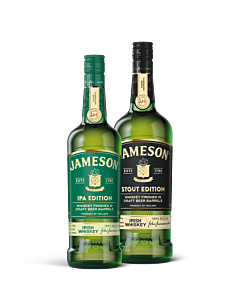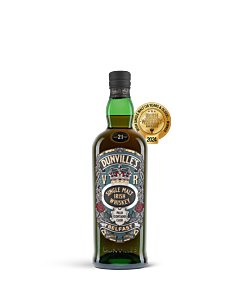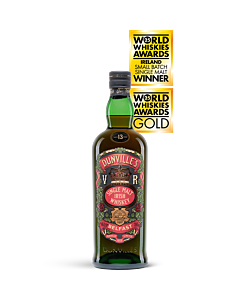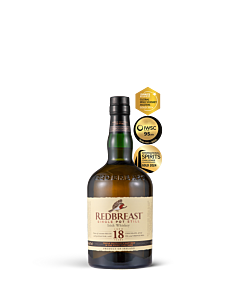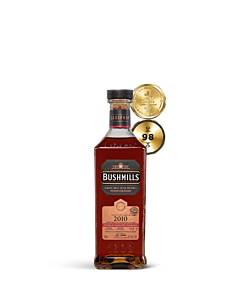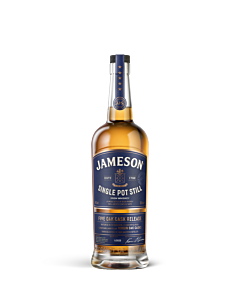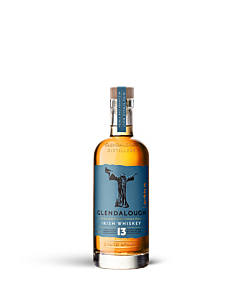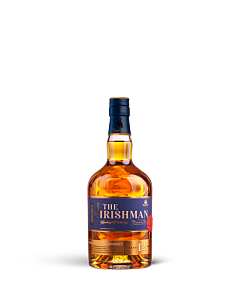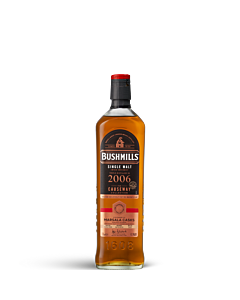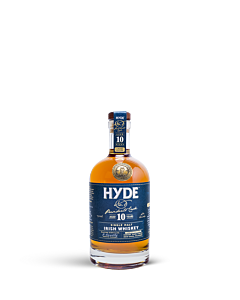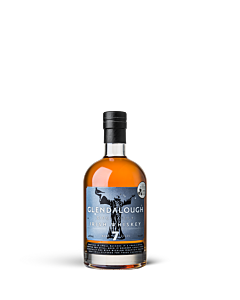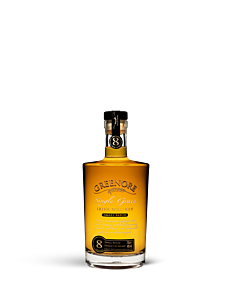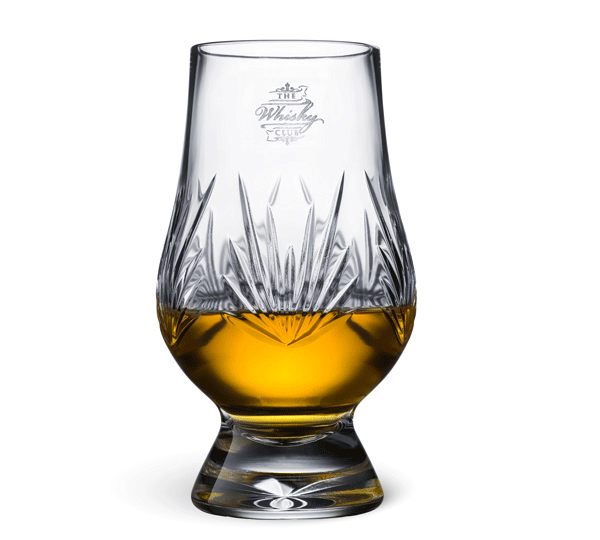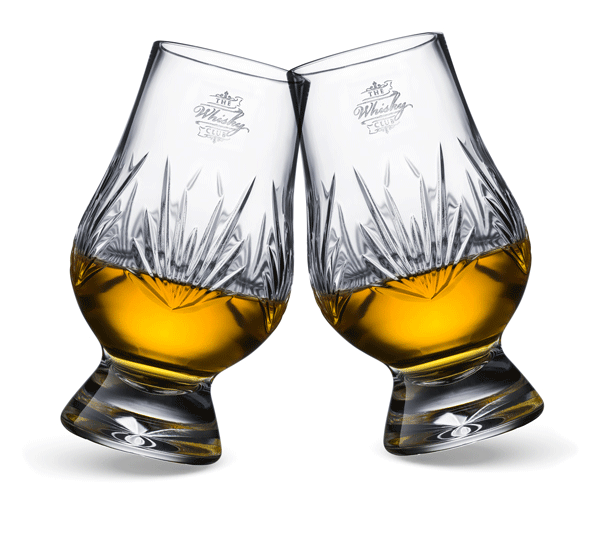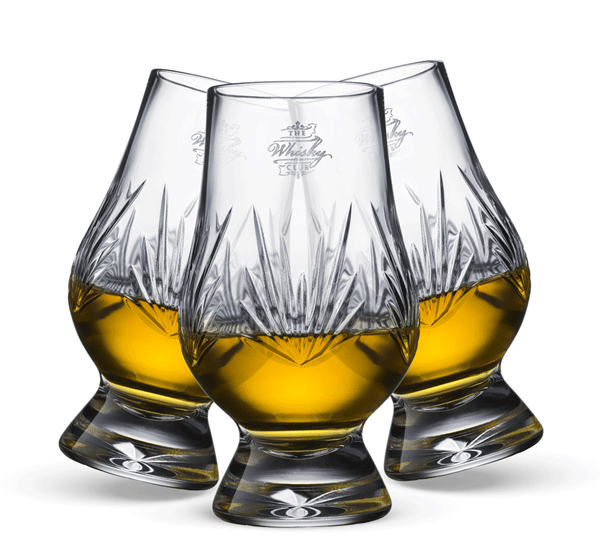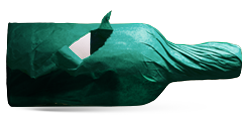Irish whiskey
Love Irish whiskey? Here’s what you’re missing…
For centuries, the island of Ireland has been a premier source of some of the world's finest whiskeys. Today, Irish whiskey is seeing a huge resurgence, capturing the hearts and minds of whiskey lovers everywhere. Join the Club free now – it's the only way to get your hands on the Club's exclusive, award-winning Irish whiskeys.
What is Irish Whiskey?
At one time, Irish whiskey was the most widely consumed spirit in the world – and there’s even a reasonable case to be made that our beloved spirit was invented there, depending on who you ask – but an intense period of decline hit the industry at the end of the 19th century, leaving just two Irish whiskey distilleries in business. Thankfully, fortunes began to shift again in the 1990s, and Irish whiskey's incredible comeback has continued ever since: there are now over forty whiskey distilleries on the island, and the industry doesn’t look like slowing down any time soon.
The term “Irish whiskey” doesn’t describe a particular style of whiskey – it just refers to a whiskey produced in Ireland, but (historically, at least) there are a few things that separate Irish whiskey from its Scotch cousin. Due to differences in the brewing and distillation process, some feel that Irish whiskey has a smoother mouthfeel and more delicate flavours than Scotch whiskies, but as we’ll see, you’ll find a number of different styles under the broader Irish whiskey umbrella.
Triple distillation
Triple distillation is synonymous with Irish whiskey. While the vast majority of Scotch is double distilled – meaning it’s run through two stills, concentrating alcohol and flavour and stripping out impurities each time – you’ll see a lot of Irish whiskeys proudly proclaiming that they’re triple distilled. The reasoning behind this can probably be traced back to the earlier days of the industry, when – in an attempt to draw more tax revenue from distilleries – the British crown introduced a tax on malted barley.
Some bright sparks quickly realised that they could get around the tax by only using a small amount of malt and filling out the rest of the mash bill with unmalted (and untaxed) barley. The resulting mash (while cheaper) was quite different to a malt-only mash, and benefitted from a third run through the stills to extract the most alcohol and flavour from the grain. Triple distillation became the style du jour, and even with changing laws and the adoption of column stills by many, the unique character of a triple distilled spirit remains a core part of many Irish whiskeys.
Types of Irish Whiskey
There are four main types of the Irish whiskey – single pot still, single malt, single grain, and blended Irish.
SINGLE POT STILL IRISH WHISKEY
Irish single pot still whiskey is made exclusively in Ireland (although other distillers around the world are beginning to experiment with the style elsewhere). The name refers to the fact that it must be made at a single distillery, and only using pot stills – no continuous or column spirit to be found here.
The other key difference in single pot still whiskey is that it uses a mixture of malted and unmalted barley, giving a unique flavour profile. Single pot still whiskey is the pride of Irish distilling, and brands such as Kilbeggan, Green Spot and Redbreast use this method to great effect.
SINGLE MALT IRISH WHISKEY
Irish whiskey’s governing laws are almost identical to those that rule over Scotch whisky. As a result, single malt Irish whiskey must be distilled in a single distillery, using only malted barley, before being matured in oak for a minimum of three years.
Although Irish single malt is produced in a similar way to Scotch single malt, it retains its own unique character, and – unlike in Scotland – single malt whiskeys do not dominate the Irish market. In fact, just two distilleries produce the majority of the country's single malts: Cooley and Bushmills.
SINGLE GRAIN WHISKEY
Ireland is known for distilling some of the finest single grain whiskeys around. Grain whiskeys are generally not as well-respected as malts, but some fantastic Irish whiskeys have managed to change the perception of the spirit.
Grain whiskey is distilled from one or a combination of rye, barley, corn and wheat. Grain distilling is one of the cheapest ways to produce whiskey, and is much more straightforward than using malt. But being straightforward to make and straightforward to make well are very different: a huge amount of knowledge and experience is needed to create a grain whiskey that's complex enough to compete with other types of the spirit.
Top-tier distillers of single grain Irish whiskey include Teeling, Midleton and Fercullen. If you're thinking about trying an Irish grain whiskey, it's well worth making sure you get your hands on something a bit special to ensure you’re getting the best impression.
BLENDED IRISH WHISKEY
Blended Irish whiskey is by far the most popular type of whiskey from the island. Iconic brands such as Jamesons and Bushmills dominate the blend market, but there are plenty of hidden gems to be found if you dig a little deeper (also, the big brands are well-known and popular for a reason!).
The big benefit of blending is that it removes a lot of the restrictions applied to other forms of whiskey, allowing distilleries to produce the exact flavour profiles and characteristics that they're looking for. Blended whiskeys are great options for newcomers and experienced drinkers alike, and are often very affordably priced.
What Are The Best Irish Whiskey Brands?
We're currently in a golden age of Irish whiskey, with loads of distilleries out there producing beautiful and delicious examples of the spirit. We don't have time to touch on them all here, but here are some of our favourite Irish whiskeys on the market.
BUSHMILLS
Bushmills is a firm favourite here at The Whisky Club. As the world’s oldest licenced whiskey distillery (they were first officially licenced in 1608), it’d be easy for them to rest on their laurels. They’ve done anything but, and still produce some of the finest whiskeys in the country.
The distillery is located in the town of Bushmills, County Antrim, an area with a long and rich distilling history (even before Bushmills was licenced).
The brand's range currently consists of blends, single malts and the limited release rare-cask-finished bottles. Bushmills' single malts are particularly great – we’re big fans of the 25 Year Old.
Here at the Club, we’ve collaborated with Bushmills on their world-famous rare-cask-finished Causeway Collection, including the 2006 Marsala Cask, the 2011 Banyuls Cask, the 2012 Burgundy Cask, and the 2010 Double Moscatel Cask. Two of them (the Burgundy and the Double Moscatel) were voted the Club Whisky of the Year by our Members!
Region: County Antrim
Style: Blended, Single Malt, Cask Finished
Popular releases: Black Bush, Single Malt 21 Year Old, the Causeway Collection
JAMESON
There's no bigger name in Irish whiskey than Jameson. Founded in 1780 by John Jameson, the brand became one of the largest spirit manufacturers in the world. The brand's success was temporarily diminished thanks to British trade restrictions and American Prohibition but has regained its immense popularity today (it’s the best-selling Irish whiskey by a margin and a half).
For many people, Jameson's iconic and widely available triple-distilled blended spirits will be their only experience of Irish whiskies, and it’s not a bad one to have. But Jameson also make a bunch of other whiskeys that are worthy of your attention.
We’re particular fans of the Caskmates series, where the distillery uses Stout and Irish Pale Ale-seasoned beer casks to finish the whiskies – a great introduction to the world of beer cask drams. And if you want something that’s a bit of a throwback to an older style, the Jameson Single Pot Still harkens back to the style that made the distillery a household name.
Region: County Cork
Style: Blended Irish whiskey
Popular releases: Jameson Original, Jameson Black Barrel, Jameson 18 Years
SPOT WHISKEY
Spot Whiskey is one of the few brands that has managed to maintain a steady level of production throughout the ups and downs of the industry in the 20th Century. The brand’s sought-after whiskeys are each named after the coloured paint spot that was marked on their barrels to denote age.
Green Spot is the brand's most well-known and widely consumed product. The whiskey is a single pot still aged for 7–10 years in ex-Bourbon barrels and Sherry casks, making for a delicate balance of fruit, spice and an unmistakable backdrop of barley.
The success of Green Spot has allowed the distillery to invest time into their older age-statement offerings. Yellow Spot 12 Year Old is a fine example – it’s aged for 12 years in Sherry casks, Malaga wine casks, and ex-Bourbon barrels, making for a lighter, sweeter twist on the Spot series.
Even further up the food chain is the rare Red Spot 15 Year Old, which features rich Marsala wine casks in the maturation regime. This whiskey is a real treat, and definitely worth getting your hands on if you can find it.
Spot might not be the flashiest producer out there, but they’re a quiet favourite of many, and being distilled at the hallowed Midleton distillery means you can expect consistent quality across the range.
Region: County Cork (Midleton Distillery)
Style: Single Pot Still, Cask Finished
Popular releases: Green Spot, Yellow Spot, Red Spot
DUNVILLE’S
Born in 1808, buried in 1936, and gloriously resurrected in 2012 – Dunville’s Irish Whiskey is the ultimate comeback story. This isn’t just another distillery; it’s a legacy reborn, a Belfast icon returned to its rightful place among the world’s best.
First established as a humble wine and spirits shop that quickly grew a reputation for selling great whiskey, Dunville’s grew to become one of the biggest players in Irish whiskey by the late 1800s, pumping out about a sixth of all Ireland’s whiskey at its peak. But in 1931, disaster struck the family business, when the chairman died suddenly at 38. With all other potential heirs either dead or elsewhere, the distillery spiralled, shuttering in 1936.
But you can’t keep a great distillery down, and in 2012 the pioneering risk-takers at the Echlinville Distillery resurrected Dunville’s, aiming to restore “The Spirit of Belfast” to its former glory. And boy, have they made a good start: their 21 Year Old Palo Cortado Cask has taken out the Ireland’s Best Single Malt Whiskey at the World Whiskies Awards and Whiskey of the Year at the Irish Whiskey Awards (twice); and their 13 Year Old Cigar Malt (Created Exclusively for The Whisky Club) won Best Small Batch Irish Single Malt (WWA) at the first time of asking.
The whisk(e)y world can expect to hear a lot more about Dunville’s in the coming years, and we’re very happy to have been the first to have brought them to Australian shores.
Region: County Antrim
Style: Single Malt, Blended
Popular releases: 13 Year Old Cigar Malt, 21 Year Old Palo Cortado Cask, PX 10 Year Old
KILBEGGAN
Kilbeggan is another lesser-known but popular producer, and holds historical significance for having released the first single grain whiskey produced in Ireland: the Greenore 8 Year Old (which is called the Kilbeggan 8 Year Old Single Grain today, thanks to some ownership changes).
Kilbeggan whiskeys are produced by the highly-respected Cooley Distillery, which was established by John Teeling in 1987. The original Kilbeggan Distillery had ceased operations in the mid-1950s after a couple of hundred years of ups and downs, but the brand was revived when Cooley acquired the Kilbeggan rights and began relaunching their products.
In 2010, the original Kilbeggan Distillery was reopened and Irish whiskey was once again produced on-site, using traditional pot stills that date back to the 1800s. Kilbeggan whiskeys are characterised by gentle spice, fruit undertones, and a smooth mouthfeel, and they’re still producing both single grain and single pot still whiskeys.
Region: County Westmeath
Style: Single Pot Still, Single Grain
Popular releases: Kilbeggan Single Pot, Kilbeggan Original, Kilbeggan 8 Year Old Single Grain
REDBREAST
One of the longest-term producers of single pot still whiskeys in the country, Redbreast has been around in some form or another (in spite of a few years of downtime here and there) since 1857, with the Redbreast name first appearing on a bottle in 1912
Redbreast whiskeys are produced at the Midleton Distillery in County Cork, which is a real hub for Irish whiskey production. Redbreast shares the premises with Jameson, Spot Whiskey, Powers, and the experimental Method and Madness.
Considered by many to be the definitive single pot still Irish whiskey, Redbreast drams are generally matured in a combination of Oloroso Sherry and ex-Bourbon casks, and they often use rarer Sherry casks for finishing. However it’s produced, it’s working – it’s the best-selling single pot still whiskey in the world.
A favourite here at the Club is the Redbreast 18 Year Old, which takes the classic Oloroso-dominated base then introduces both Ruby Port and Cream Sherry casks to the maturation regime, resulting in an even richer, luxurious dram.
Region: County Cork (Midleton Distillery)
Style: Single Pot Still
Popular releases: Redbreast 15-Year-Old, Redbreast 21-Year-Old, Redbreast Lustau Edition
TEELING
When Teeling opened its Dublin distillery doors in 2015, it was the first in the city to do so for 125 years. In an attempt to rekindle Dublin's whiskey heritage, the sons of John Teeling (founder of the Cooley Distillery) established their premises in the Liberties area and set to work continuing their father's legacy.
Teeling's output currently consists of five main Irish whiskeys. These are Teeling Small Batch, Single Grain, Single Malt, Single Pot Still, and Blackpitts Peated Single Malt. The Small Batch is the brand's most recognisable expression – a blend of grain and malt whiskeys skilfully aged in ex-rum casks – and the Single Grain is a stellar example of an Irish grain whiskey.
There's also an exciting range of special edition Teelings to explore: for age-statement enjoyment, the Vintage Reserve Collection is made up of long-aged single malts, with maturities stretching from 21 years all the way up to a mind-boggling 40 years old. They also occasionally produce a cracking Stout Cask, using barrels seasoned with Galway Bay Brewery’s 200 Fathoms Imperial Stout.
Region: Dublin
Style: Single Malt, Single Pot Still, Single Grain
Popular releases: Small Batch, Single Grain, Single Pot Still
TULLAMORE D.E.W.
Tullamore is another extremely successful and popular company that has surfed the waves of the recent Irish whiskey boom with grace. Their blended whiskeys are second only to Jameson in total Irish whiskey sales, which is no mean feat!
Established in 1829 (the D.E.W stands for Daniel Edmund Williams, a formative distiller for the brand), the brand just about made it through Irish whiskey's many darker years in one piece, and production was transferred to the Midleton Distillery in the 1970s.
Today, Tullamore D.E.W. resides in a brand new, dedicated distillery on the outskirts of Tullamore itself. Since making the move, the brand now shifts around 1 million cases of blended whiskey every year.
Much like Jameson, Tullamore D.E.W. doesn't just churn out mass-market crowd-pleasers and blends – they make some lovely age-statement single malts (try the 18 Year Old).
Region: Tullamore, County Offaly
Style: Single Malt, Cask Finished
Popular releases: Tullamore Original Blended Irish Whiskey, 18 Year Old Single Malt
Liking the sound of all this? Check out the Irish whiskey exclusives we've sourced, just for Members of The Whisky Club.


